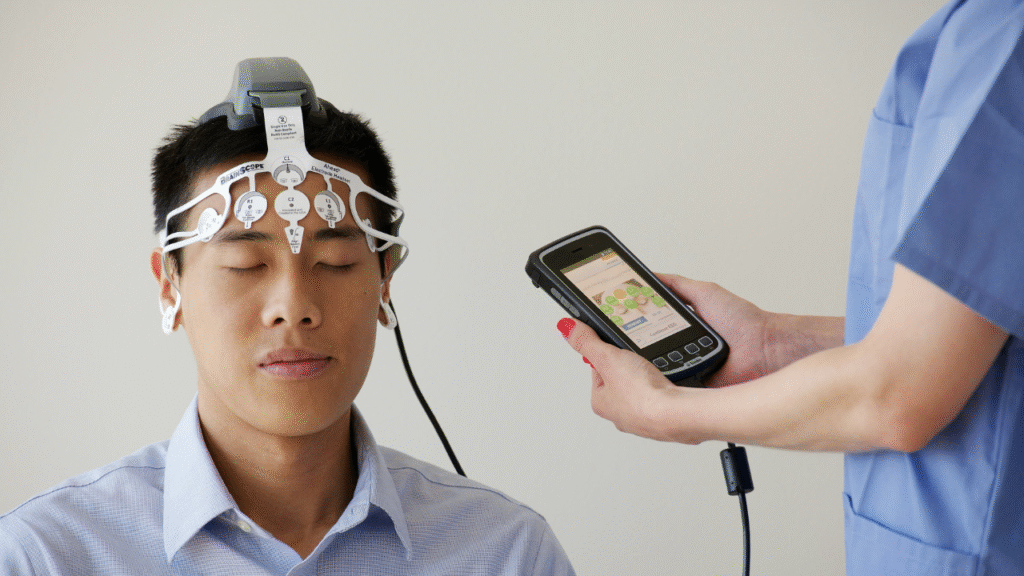🌟 Introduction: Bridging Mind and Machine
What if you could send a text, move a robotic arm, or fly a drone just by thinking? It sounds like science fiction, but it's quickly becoming our reality. Thanks to brain-controlled devices, we’re entering a world where our thoughts can control technology in real time. This exciting frontier, once imagined in futuristic movies, is now being actively developed in labs and startups around the world.
From helping patients with paralysis regain mobility to enhancing gaming experiences, brain-controlled devices are changing the way humans interact with machines, offering new hope, greater independence, and smarter interfaces.
🧠 What are Brain-Controlled Devices?
Brain-controlled devices (also known as brain-computer interfaces or BCIs) are systems that establish a direct communication pathway between the brain and an external device, bypassing the need for speech, touch, or physical movement. In simple terms, they translate brain signals into digital commands.
This means your brain can “talk” to a computer, robotic limb, or even a smart home system—without lifting a finger. Whether you’re looking to play a game hands-free or restore movement after a spinal injury, brain-controlled devices are opening doors we once thought were closed.
This means your brain can “talk” to a computer, robotic limb, or even a smart home system—without lifting a finger. Whether you’re looking to play a game hands-free or restore movement after a spinal injury, brain-controlled devices are opening doors we once thought were closed.

⚙️ How Brain-Controlled Devices Work: From Brainwaves to Action
At the heart of all brain-controlled devices is the ability to read, interpret, and act upon brain signals. Here’s how it works:
1. Signal Detection
Electrodes—either non-invasive (like EEG headsets) or invasive (implanted in the brain)—detect neural activity. Your brain constantly sends electrical signals, and brain-controlled devices pick up specific patterns tied to intention or thought.
2. Signal Translation
Once signals are captured, they’re processed by smart algorithms that translate them into actionable commands. For instance, if your brain signals show the intention to move your right hand, a robotic arm connected to the device will move accordingly.
3. Output Response
The device then carries out the action—whether it’s moving a cursor, sending a message, or controlling a prosthetic limb.

This entire process happens in fractions of a second, allowing for near real-time interaction.
🌍 Real-World Uses of Brain-Controlled Technology: Applications of Brain-Computer Devices
Let’s explore how brain-controlled devices are already making a difference in people’s lives:
1. Medical Rehabilitation
One of the most powerful applications of brain-controlled devices is in helping patients with paralysis, stroke, or neurodegenerative diseases. These devices allow individuals to control wheelchairs, computers, or robotic limbs—restoring independence and dignity.
2. Communication Tools
For people with conditions like ALS (Lou Gehrig’s disease), who lose the ability to speak or type, brain-computer devices can translate thoughts into text, enabling them to communicate once again.
3. Prosthetics and Mobility
Modern prosthetic limbs connected to brain-controlled devices can be moved and controlled using the user’s own thoughts. Some even offer feedback, like the sensation of pressure or touch.
4. Gaming and Entertainment
Gamers are now exploring brain-controlled devices to control avatars or interact with virtual environments, creating an immersive, hands-free experience.
5. Smart Home Integration
Imagine adjusting your lights or changing music using your brainwaves. With advances in smart technology, brain-computer devices are starting to interact with home automation systems.
🔬 The Science Driving the Innovation: What Makes Brain-Controlled Devices Possible?
It’s a mix of neuroscience, artificial intelligence, and miniaturized hardware. Here’s what powers this innovation:

- Neuroscience helps us understand which brain signals correspond to specific thoughts or actions.
- Machine learning algorithms analyze vast amounts of neural data and adapt to individual brain patterns.
- Wireless technology and microelectronics have enabled portable and non-invasive brain-controlled devices that are more user-friendly than ever before.
The result? Devices that are smarter, faster, and more accessible.
🛠️ Current Challenges and Limitations: Barriers to Mainstream Use of Brain-Controlled Devices
As promising as Brain-controlled devices are, there are still hurdles to overcome:
- Cost and accessibility: High-end brain-computer devices can be expensive, limiting access to a few.
- Training and accuracy: Users often need time to train the device and improve its accuracy.
- Data privacy: Since these devices read your brain signals, who owns that data? Ethical concerns around privacy are growing.
- Medical risks: Invasive BCIs require surgery and can carry health risks.
Despite these challenges, researchers are constantly improving the technology to make brain-controlled devices safer, smarter, and more affordable.
🔮 The Bright Future of Brain-Controlled Tech: What's Next for Brain-Computer Devices?
The future looks incredibly promising. Here’s what we can expect:
- Non-invasive BCIs that are as effective as implanted ones
- AI-enhanced devices that learn faster and become more intuitive
- Commercial wearable BCIs for daily use—like productivity boosters, meditation aids, or even attention monitors in classrooms

Imagine a workplace where your brain signals track mental fatigue and suggest breaks. Or classrooms where attention levels help tailor learning. The possibilities are endless with brain-computer devices leading the charge.
💡 Final Thoughts: Thought to Reality, Literally
Brain-controlled devices are no longer just futuristic fantasies. They are real, they are here, and they’re evolving fast. From restoring lost abilities to redefining how we interact with machines, these devices are unlocking new levels of human potential.
As scientists and engineers continue to innovate, the line between thought and action will blur even further. Whether you're passionate about tech, health, or accessibility, it's clear: brain-controlled devices are opening the door to a smarter, more connected future, where your mind truly controls your world.
So next time you think about the future, remember—your thoughts might be all you need.








